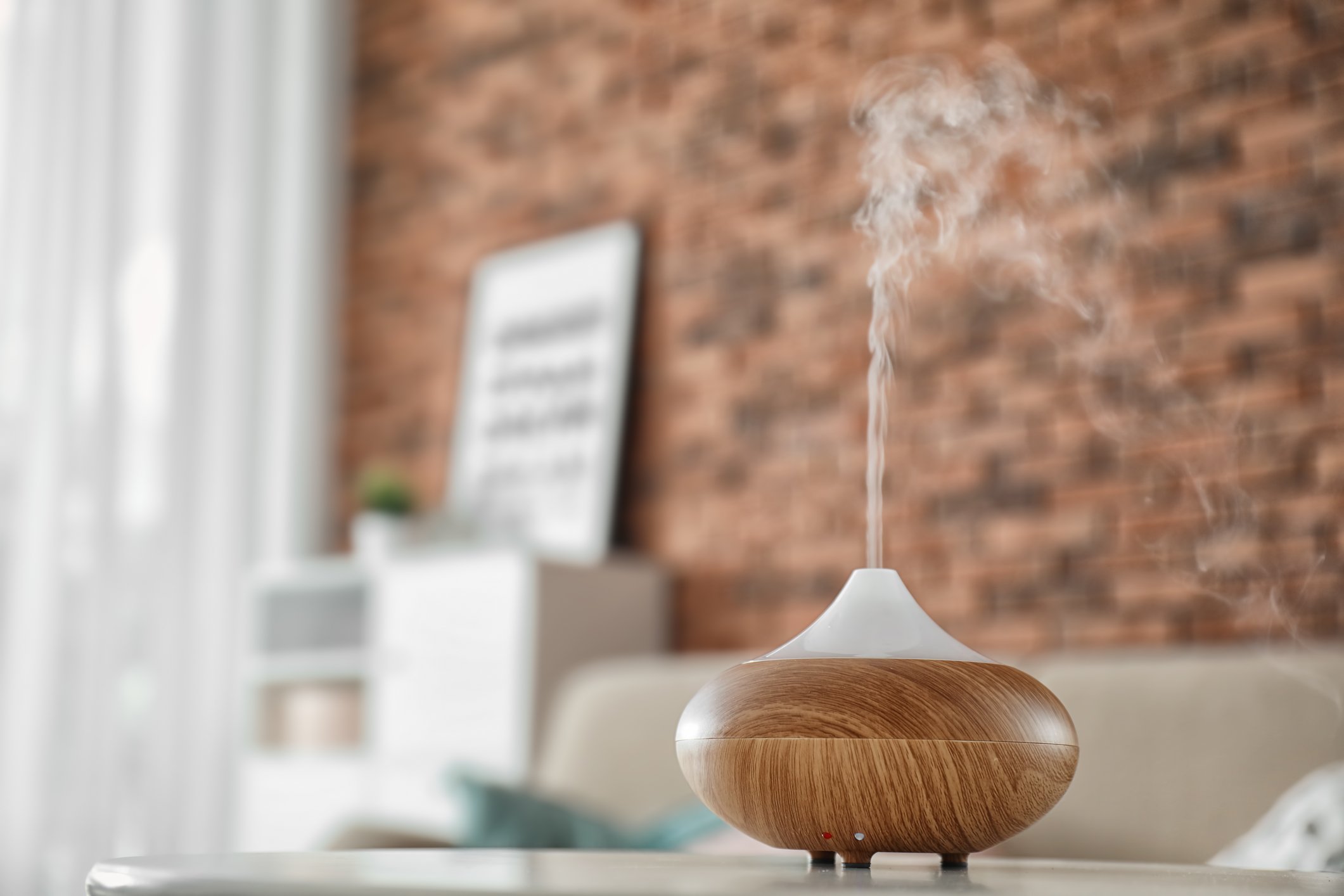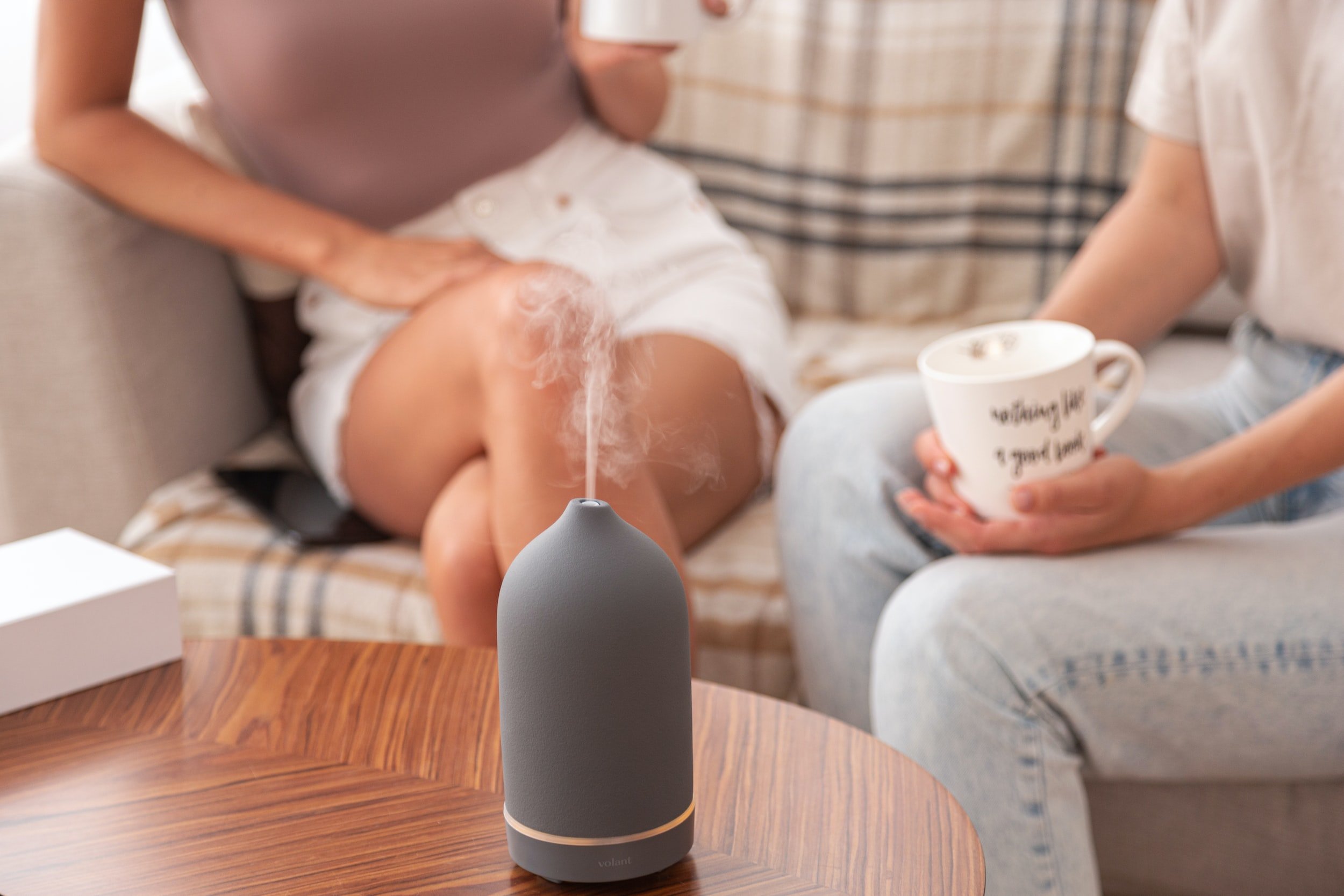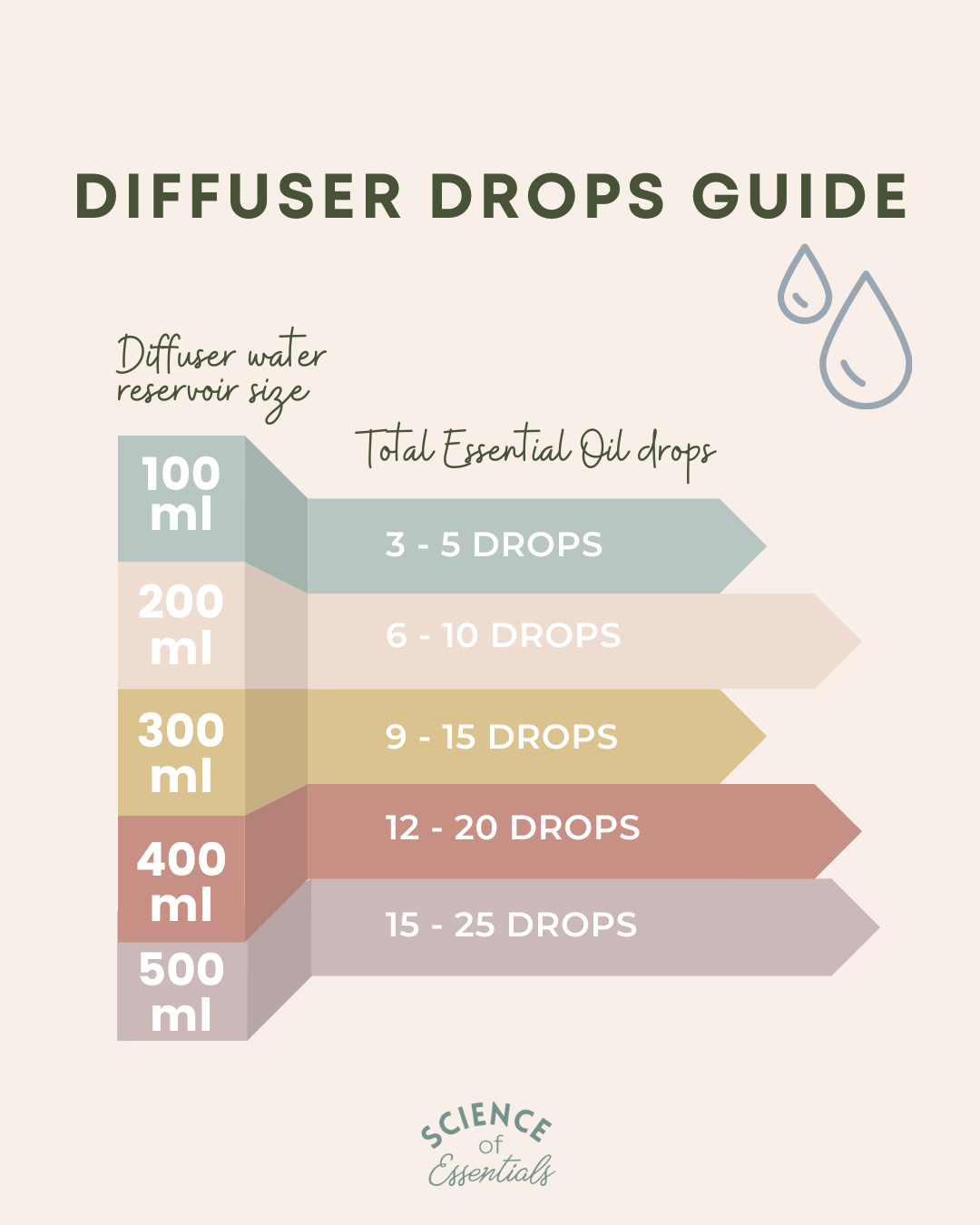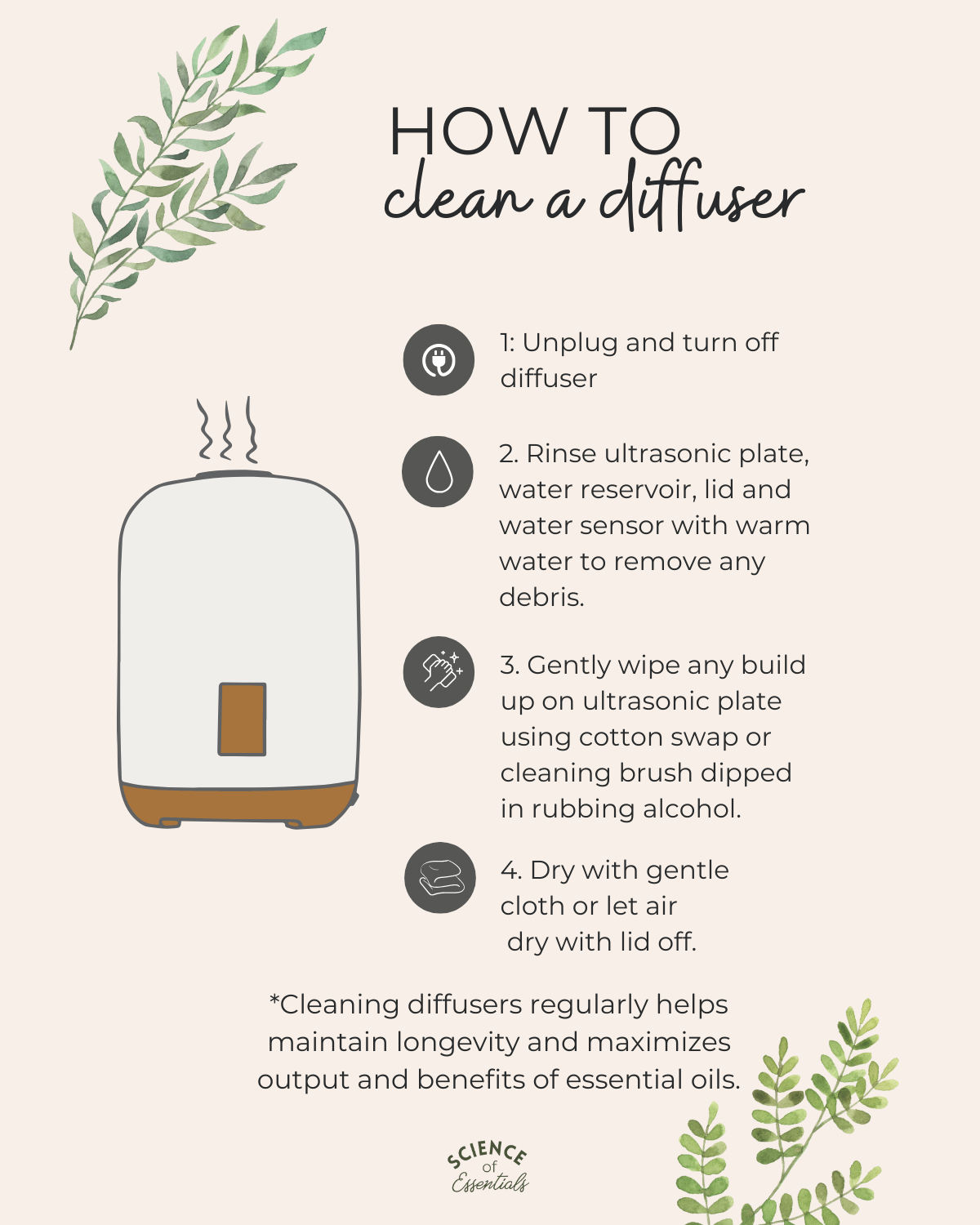Are Essential Oil Diffusers Safe? Commonly Asked Questions on Diffusing Answered
Scent is POWERFUL!
Smell is the most underutilized sense we have yet one of the most powerful. It is our most primal sense. It stops us from drinking sour milk, alerts us to natural gas, and can even detect a fire 30 miles away. While other mammals, such as dogs and cats have a much keener sense of smell, the human sense is still extraordinary with the human genome being packed with over 950 odorant receptor genes. Not to mention it’s the only sense that taps directly into the part of the brain responsible for emotion and memory.
In today’s stressful world, many are turning to aromatherapy to help support sleep, stress, and self-care. Essential oil diffusers have quickly replaced candles in many households, but are they safe? Do they release VOCs? Can we safely diffuse around children and pets? How many drops do we add? What are the differences in diffusers? Answering these questions and more!
But first, what are the benefits?
Stress relief is by far the strongest pillar of aromatherapy practice. Aromatherapy can be a very helpful technique to elicit a relaxation response. Due to the complex chemical constituents, essential oils can play a role in transforming unpleasant emotions, inducing relaxation and potentially reducing the damaging effects of stress on the mind and body.
“Most studies, as well as clinically applied experience, have indicated that various essential oils, such as lavender, lemon and bergamot can help to relieve stress, anxiety, depression and other mood disorders. Most notably, inhalation of essential oils can communicate signals to the olfactory system and stimulate the brain to exert neurotransmitters (e.g. serotonin and dopamine) thereby further regulating mood.” (1)
A few of my favorite studies showing how essential oils can reduce stress and impact mood:
A randomized crossover study with 42 females showed that salivary cortisol levels were reduced significantly after inhalation of bergamot essential oil. Also the high-frequency heart (a component of heart rate variability and indicator of parasympathetic nervous system function) also increased significantly. (2)
A small pilot study of 57 participants found that diffusing bergamot in a waiting room increased positive feelings and moods. (3)
A randomized single blind control study found that inhalation of a lavender and ylang ylang blend significantly reduced stress, sympathetic nervous system activity, lowered blood pressure and reduced serum cortisol levels. (4)
What is the difference between passive versus active diffusing?
When people think of diffusing essential oils, they commonly think of active diffusing. Active diffusion uses equipment that helps release the aromatic compounds into the air. Passive diffusion does not require any special equipment and allows the aromatics to diffuse into the air passively as they evaporate. For example, adding a few drops of essential oils to a cotton ball, stuffed animal, pinecones, clay/lava bead jewelry, or within a reed diffuser to enjoy the benefits.
What are the differences in active diffusers?
The two most frequently used diffusers are ultrasonic diffusers and nebulizer diffusers.
Ultrasonic Diffusers: Are a popular diffuser that is perfect for use in the home. They plug into the wall and only require a small amount of water and few drops of essential oils. This diffuser uses ultrasonic frequencies to vibrate a small disk that releases the oil within the water into a fine mist.
Nebulizer Diffusers: Use large amounts of essential oils, however, the oils are diffused for short intervals of time. There is no heat used or water added to the diffuser. A nebulizer diffuser works through an air pump atomizing the essential oil and releasing the oil into the air in the form of tiny droplets.
Nebulizer Diffuser
Is diffusing essential oils safe?
While there is not robust data to show that diffusing essential oils is harmful, like all things it is still advisable to use in moderation. I personally don’t diffuse every day and when I do, I diffuse for short intervals of time in a large well-ventilated room. Robert Tisserand, a well-known industry leader in essential oil education and research states:
It is not advisable to directly and intensively inhale essential oils for longer than 15-20 minutes, such as with steam inhalation. However, this does not apply to ambient inhalation from essential oils vaporized into the air. If you are diffusing essential oils, it makes more sense to do this intermittently than constantly, all day long. Ideally, diffuse essential oils for 30-60 minutes on, then 30-60 minutes off. This is not only safer, but it’s also more effective as both our bodies and our nervous system habituate to essential oils after this period of time. Whenever you are using or diffusing essential oils, some air exchange (fresh air) is advisable. (5)
-Robert Tisserand, author of the book “Essental Oil Safety”
Does diffusing release VOCs into the air?
Recently in social media there has a been concern about diffusing essential oils releasing VOCs into the air. Volatile organic compounds (VOCs) are chemicals that both vaporize into air and dissolve in water. Are essential oils volatile organic compounds? Yes. Volatile organic compounds are everywhere! Ripe banana, carpet, couch, crayons, candles, take a walk outside, anything with an aroma releases VOCs, and that includes essential oils. There are some VOCs that are considered more toxic than others especially when exposed in excess like formaldehyde, benzene, diesel, petrol, gasoline etc. Is there research to show that running an essential oil diffuser in a large well-ventilated space exposing one to toxic levels of VOCs? As of right now, there is no data that shows this. There is also no data to show that diffusing essential oils disrupts the microbiome.
Can I diffuse for large amounts of time?
It is important to diffuse in a large well-ventilated space and is recommended to diffuse in short intervals for the greatest benefit. "Low levels of diffusion so the essential oil is barely noticeable are fine anywhere, for any length of time"-Robert Tisserand.
Can diffusing essential oils cause headaches?
If you ever experience a headache while diffusing, turn off the diffuser, get fresh air, and drink water. While headaches do have a wide range of etiologies (dehydration, sleep, stress, hormones, etc.), they can also be caused by overexposure to essential oils. Extended duration in small spaces could trigger a headache. This tends to be much more likely to occur with synthetic fragrances. It is also true that when experiencing a headache, 40-50% of migraine and headache sufferers report a change in olfactory perception and experience aroma aversions. (6) We tend to be much more sensitive to smells when battling a headache.
Is there a difference in what brand of essential oils I use?
It is important to keep in mind that not all essential oils are created equal. Essential oils are not regulated so there is no pre-product approval or accountability in the essential oil market. While many brands offer 100% pure essential oils, it is also true that many essential oils are NOT what they appear. Buy directly from the source and check back labels for botanical name, other additives, cheaper substitutes and fragrances.
Can I diffuse around my children?
While diffusing is one of the safest ways to utilize the benefits of essential oils, it is important to remember that essential oils are extremely concentrated and potent. Follow your diffusers recommendations for water and essential oil drop quantity recommendations and diffuse in large well-ventilated space. Do not put infants directly next to running diffusers. Keep diffusers and essential oils out of reach of small children and pets.
A few oils to avoid using with small children include:
Anise
Birch
Cassia
Clove Bud
Eucalyptus
Fennel
Hyssop
Lemongrass
Pennyroyal
Peppermint
Rosemary (1,8 cineole CT)
Sage
Verbena (lemon)
Wintergreen
Ylang Ylang
*Many on this list are precautionary due to case reports of using the essential oil or chemical constituent in unsafe ways.
Can I diffuse essential oils around my pets?
With all pets, but especially dogs, we need to take into consideration that they have a heightened sense of smell compared to humans. When diffusing around dogs and cats, diffuse in large, well-ventilated space for short intervals of time. Allow pets to leave the room if they do not like the scent.
When it comes to cats, there tends to be a greater concern because cats have a deficient P450 cytochrome pathway. This means they have more difficulty breaking down certain metabolites, medications, and essential oils compared to dogs and humans. Most documentation regarding harmful side effects and cats has to do with essential oils not being used properly and/or used in excessive amounts topically. Some people prefer to avoid essential oils that are high in phenols around cats. For example: thyme, oregano, basil, laurus nobilis, wintergreen, cinnamon bark and tea tree. Those essential oils should not be applied topically to your pet unless you are using them under the discretion of a Certified Aromatherapist or Veterinarian who is knowledgeable about essential oils.
How many drops do I put into the diffuser?
This depends on the type and size of the diffuser. If using an ultrasonic diffuser it will depend on the water reservoir. Use this above graphic as a guide or refer to your diffuser's manual.
Why can’t I smell my essential oils diffusing after a while?
If your diffuser is cleaned regularly and you have no underlying causes of loss of smell then this is likely due to sensory adaptation. Our brain adapts and recognizes the constant aroma and stops identifying it. Therefore we perceive the smell to be fading, allowing us to adapt to our environment and perceive new smells. If you leave the house (or room) and come back, you should be able to smell the aromas again.
How often should I be cleaning my diffuser?
It is recommended to clean your diffuser weekly. You may want to clean more frequently if using more viscous essential oils like vetiver, patchouli, rose, sandalwood etc. Follow your diffuser's manual for proper cleaning procedure. Cleaning your diffuser regularly maintains longevity and increases essential oil output and benefits!
Want to learn more about using essential oils? Check out my latest book Science of Essentials: The Essential Guide for Using Aromatherapy to Promote Health and Healing here.
New to essential oils? See my blog article, 10 things I wish I knew about essential oils when I started.
Disclaimer: This blog is for general informational purposes only and does not constitute the practice of medicine, nursing or other professional health care services, including the giving of medical advice. The use of information on this blog or materials linked from this blog is at the user's own risk. The content of this blog is not intended to be a substitute for professional medical advice, diagnosis, or treatment. Users should not disregard, or delay in obtaining, medical advice for any medical condition they may have, and should seek the assistance of their health care professionals for any such conditions.
References:
Lv XN, Liu ZJ, Zhang HJ, Tzeng CM. Aromatherapy and the central nerve system (CNS): therapeutic mechanism and its associated genes. Curr Drug Targets. 2013 Jul;14(8):872-9.
Watanabe E, Kuchta K, Kimura M, Rauwald HW, Kamei T, Imanishi J. Effects of bergamot ( Citrus bergamia (Risso) Wright & Arn.) essential oil aromatherapy on mood states, parasympathetic nervous system activity, and salivary cortisol levels in 41 healthy females. Forsch Komplementmed. 2015;22(1):43-9.
Han X, Gibson J, Eggett DL, Parker TL. Bergamot (Citrus bergamia) Essential Oil Inhalation Improves Positive Feelings in the Waiting Room of a Mental Health Treatment Center: A Pilot Study. Phytother Res. 2017 May;31(5):812-816. doi: 10.1002/ptr.5806. Epub 2017 Mar 24.
Hwang JH. [The effects of the inhalation method using essential oils on blood pressure and stress responses of clients with essential hypertension]. Taehan Kanho Hakhoe Chi. 2006 Dec;36(7):1123-34.
Tisserand, Robert. Retrieved from: Safety Guidelines - Tisserand Institute
Blau JN, Solomon F. Smell and other sensory disturbances in migraine. J Neurol. 1985;232(5):275-6.
